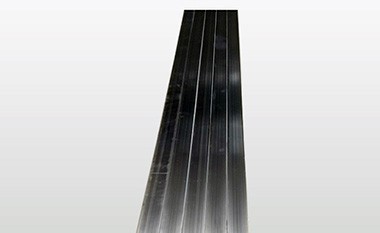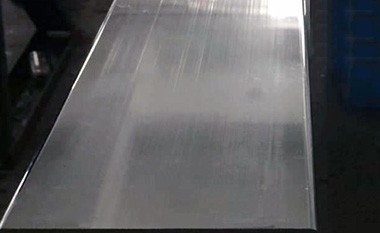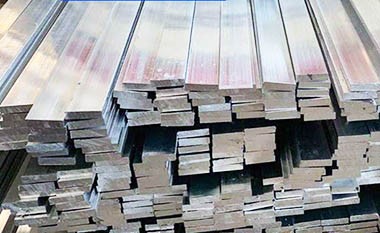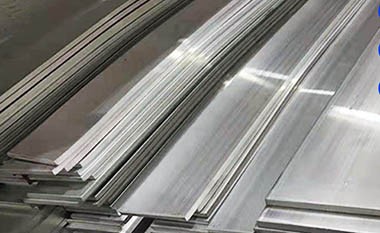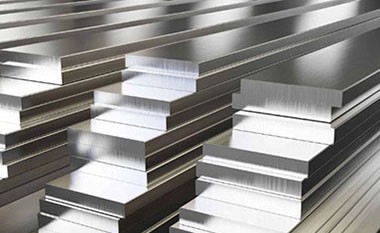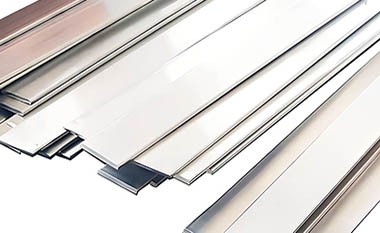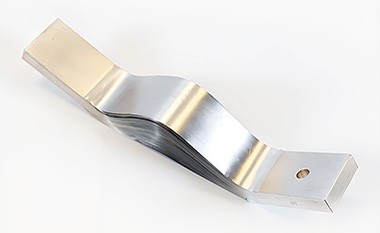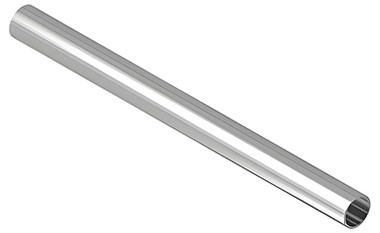Copper Clad Aluminum Busbar
Copper Clad Aluminum (CCA) busbar is a conductive component used in power distribution systems. It is composed of an aluminum core and a copper layer, combining the superior properties of both metals.
Copper Clad Aluminum (CCA) busbar is a composite conductor used in various applications for distribution. It combines an aluminum core with a copper outer layer, integrating the advantages of both metals: the lightweight and cost-effectiveness of aluminum, and the conductivity and corrosion resistance of copper.
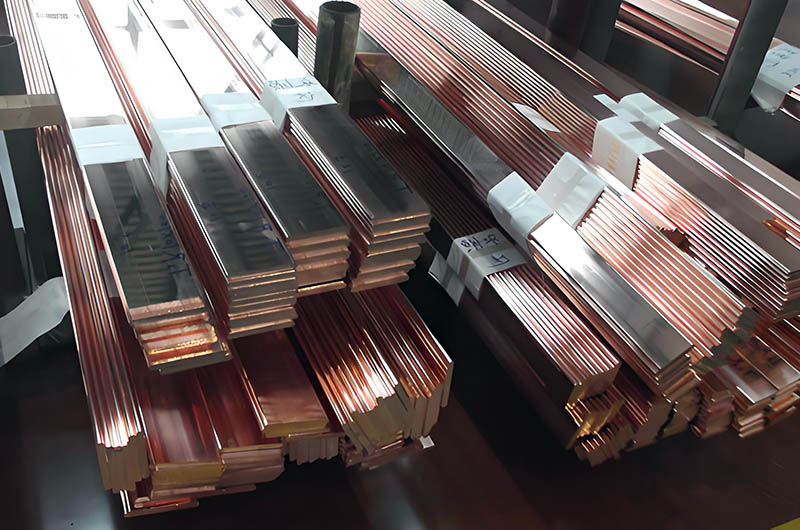
Copper Clad Aluminum Busbar Composition and Structure
- Core Material: The core is typically made from high-purity aluminum alloys such as 1050, 1060, 1070, and 1100, which provide excellent conductivity, structural support, and weight reduction.
- Cladding Material: The outer layer is made of copper, typically T2 or C11000 grade, offering excellent conductivity and corrosion resistance, ensuring effective electrical contact and durability.
- Bonding: Copper and aluminum layers are metallurgically bonded through processes such as rolling or extrusion, ensuring a strong interface that enhances both mechanical strength and electrical performance.
- Cladding Ratio: Copper typically occupies 10-30% of the cross-sectional area, depending on the application requirements.
Copper Clad Aluminum Busbar Advantages
- High Conductivity: Copper Clad Aluminum busbars have a conductivity of 60-70% of copper, which is superior to pure aluminum. The copper cladding ensures that the busbar maintains high conductivity, close to that of pure copper, which is crucial for efficient power distribution.
- Cost-effectiveness: Aluminum is more abundant and cheaper than copper, and the material cost of CCA busbars is reduced by approximately 40-60% compared to pure copper, making CCA busbars a cost-effective alternative to solid copper busbars.
- Lightweight: Due to aluminum's low density, the aluminum core busbar is lighter than solid copper, reducing the weight by up to 50% compared to solid copper, which makes handling and installation easier.
- Mechanical Strength: The metallurgical bonding between copper and aluminum provides enhanced mechanical strength, reducing the risk of failure under stress.
- Corrosion Resistance: The copper layer prevents oxidation at the connection points.
- Thermal Management: Copper's high thermal conductivity helps dissipate heat effectively.
Copper Clad Aluminum Busbar Specifications
| Item | Description |
| Core Material | High-purity aluminum (1050, 1060, 1070, 1100 alloys) |
| Cladding Material | Copper (T2 or C11000 grade) |
| Copper Content | 10%, 20%, 25%, 30%, 35% (by volume) |
| Heat Treatment Grade | O, H28, H26, H24 |
| Standards | ASTM B786 (clad products), IEC 61238 (connectors) |
| Rated Current | Varies with cross-sectional area, e.g., 100x10mm CCA is 1000A, solid copper is 1200A |
| Temperature Range | -50°C to +150°C |
| Thickness | Ranges from 3.0mm to 120mm |
| Width | Ranges from 10mm to 250mm |
| Manufacturing Standards | International standards such as ASTM B1005-17, ensuring product quality and performance consistency |
Copper clad aluminum busbar /CCA busbar size deviation
| Dimension | Typical Deviation |
| Width | ±1% or ±0.5mm |
| Thickness | ±1% or ±0.5mm |
| Length | ±2mm or ±0.5% |
| Straightness | ±1-2mm per meter |
| Edge/Chamfer | ±1-2mm |
| Surface Roughness | Ra ≤ 3.2 µm |
If you require more precise tolerances for specific CCA busbar sizes or if you are using customized products, please feel free to contact us.
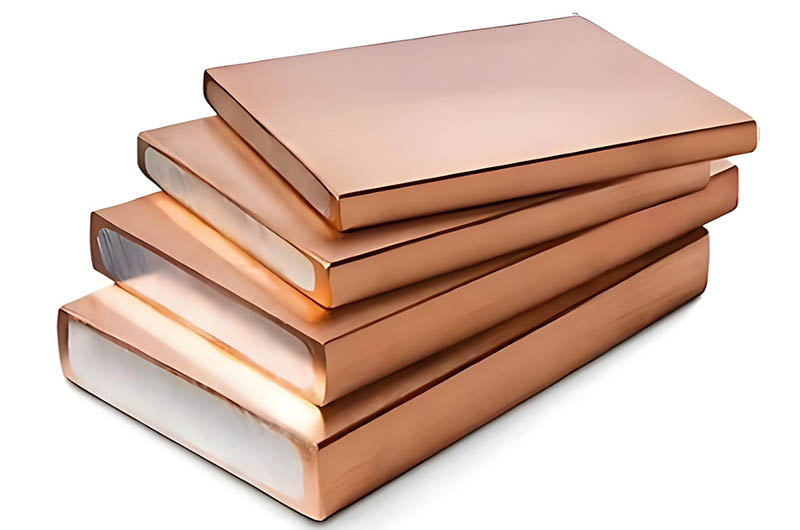
CCA busbar AC ampacity reference table
The ampacity (current-carrying capacity) of Copper Clad Aluminum (CCA) busbars depends on factors such as their size (cross-sectional area), insulation type, temperature rating, and installation conditions. Below is a general reference table for the ampacity of CCA busbars based on common busbar sizes. This table provides typical values for the AC ampacity of CCA busbars, assuming normal environmental conditions and good ventilation. Ampacity may vary significantly depending on the specific application, installation, and other environmental factors.
Key Factors Affecting CCA Busbar Ampacity
- Material Conductivity: CCA combines aluminum’s lightweight properties with copper’s superior surface conductivity (critical for AC due to skin effect).
- Cross-Sectional Area: Larger dimensions increase current-carrying capacity.
- Temperature Rise: Typically rated for 50°C rise over 30°C ambient.
- Frequency: AC losses (skin/proximity effects) increase with frequency (e.g., 60 Hz vs. 50 Hz).
- Installation: Ventilation, enclosure type, and adjacent busbars impact cooling.
Example CCA Busbar AC Ampacity Table (60 Hz, 50°C Rise, 30°C Ambient)
| Cross-Section (mm²) | Dimensions (mm) | Approx. Ampacity (A) | Notes |
| 100 | 10 x 10 | 800–1, 000 | Comparable to 70–80% of pure copper. |
| 200 | 20 x 10 | 1, 400–1, 800 | Skin effect favors copper cladding. |
| 300 | 30 x 10 | 2, 000–2, 500 | Thicker copper layers improve performance. |
| 400 | 40 x 10 | 2, 600–3, 200 | Higher cross-sections mitigate losses. |
Comparison with Pure Metals (Same Dimensions)
| Material | Ampacity (A) | Relative to CCA |
| Pure Aluminum | ~60–70% of CCA | Lower due to higher AC resistance. |
| Pure Copper | ~120–130% of CCA | Higher conductivity, better skin effect performance. |
Important Notes
Skin Effect: At 60 Hz, current flows predominantly on the surface. CCA’s copper layer reduces AC resistance compared to pure aluminum.
Derating Factors:
- Ambient Temperature: Reduce ampacity by 1–2% per °C above 30°C.
- Enclosed Spaces: Derate by 10–20% for poor ventilation.
- Multi-Busbar Installations: Add 5–15% derating for proximity heating.
- Copper Layer Thickness: Critical for performance. Thin layers (<0.5 mm) may behave closer to aluminum.
HC Aluminum Copper Clad Aluminum Busbar Quality Assurance
HC Aluminum offers customized Copper Clad Aluminum (CCA) busbars in various sizes, and all CCA busbars undergo the following quality inspections before leaving the factory to ensure product quality.
Our production workshop is equipped with upgraded machines and more than 50 pressure machines, capable of producing CCA that meets your specifications. We have facilities for bending, forming, drilling, milling, welding, electroplating, and more. Our precision machining technology allows us to control dimensional tolerances within ± 0.001''.
We can produce CCA busbars with rounded and square edges. Our products are certified according to GB/T 30586-2014 and ASTM B1005 − 17.
The quality testing of HC Aluminum Copper Clad Aluminum Busbars involves multi-dimensional verification of material, electrical, mechanical, and environmental properties. The focus is on controlling the copper-aluminum interface bonding strength, conductivity, and corrosion resistance, strictly following industry standards. In the production process, online monitoring (such as eddy current testing) and batch sampling inspections are employed to ensure product consistency.
HC Aluminum Copper Clad Aluminum Busbar Quality Testing
| Test Item | Testing Method | Standard Requirement | Non-Conformance |
| Copper Layer and Aluminum Core Ratio | Cross-sectional metallographic analysis (microscope/SEM), chemical titration (ICP spectroscopy) | Copper layer ratio ≥ 10%, thickness error ≤ ±5% | - |
| Interface Bonding Quality | Peel strength test (tensile machine), ultrasonic testing | Peel strength ≥ 50 N/cm² | Delamination, bubbling, cracks |
| Electrical Performance | Conductivity (four-point method), AC impedance and skin effect (high-frequency testing) | Conductivity ≥ 60% IACS, normal impedance | Impedance surge or abnormal heating |
| Mechanical Performance | Tensile strength (ASTM E8/E8M), bending and ductility (180° repeated bending test) | Tensile strength ≥ 100 MPa, bending radius ≥ 2 times the busbar thickness | Copper layer cracking or peeling |
| Corrosion Resistance | Salt spray test (ASTM B117), damp heat cycling test | No red rust or white rust | - |
| Surface Quality and Dimensional Tolerance | Visual/optical appearance inspection, micrometer/laser thickness gauge for dimensional accuracy | Smooth surface with no scratches, dimensional deviation ≤ ±0.1mm (thickness), ≤ ±1% (width) | Burrs, oxidation spots |
| Thermal Performance | Thermal cycling test (-40℃ ~ +125℃), current-carrying temperature rise test | No delamination after 100 cycles, temperature rise ≤ 30℃ | - |
Testing Frequency:
- Sampling inspection for each batch (e.g., inspect 1 meter per 1000 meters).
- Key items (such as interface bonding strength and conductivity) require 100% inspection.
Testing Equipment:
Tensile machine, ultrasonic flaw detector, four-point tester, salt spray test chamber, etc.
Standard References:
ASTM B786, IEC 61238, IEC 61439, GB/T 20975.
CCA busbar Weight Display in Common Specification
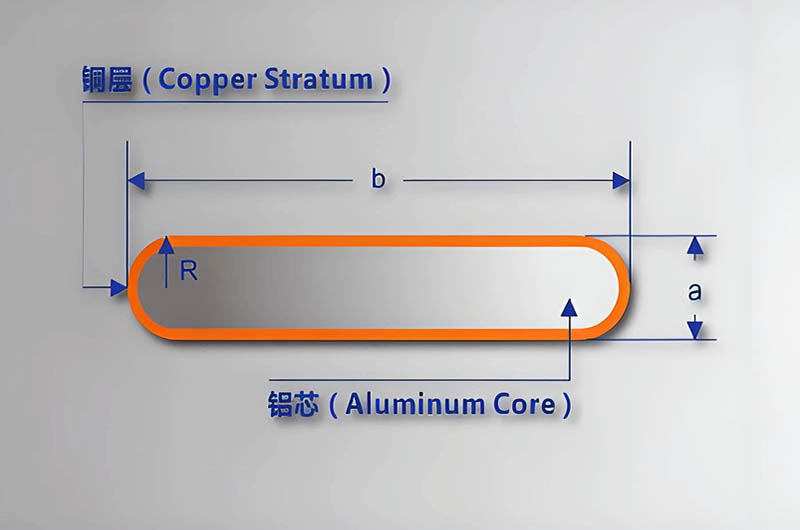
| Specification a*b (mm) | Weight/meter (kg) |
| 3*30 | 0.31 |
| 3*40 | 0.42 |
| 3*50 | 0.53 |
| 4*40 | 0.56 |
| 4*50 | 0.7 |
| 4*60 | 0.84 |
| 4*80 | 1.12 |
| 5*40 | 0.7 |
| 5*50 | 0.875 |
| 5*60 | 1.05 |
| 5*80 | 1.4 |
| 6*40 | 0.84 |
| 6*50 | 1.05 |
| 6*60 | 1.26 |
| 6*80 | 1.68 |
| 6*100 | 2.1 |
| 8*50 | 1.4 |
| 8*60 | 1.68 |
| 8*80 | 2.24 |
| 8*100 | 2.8 |
| 8*120 | 3.36 |
| 8*200 | 5.6 |
| 10*60 | 2.1 |
| 10*80 | 2.8 |
| 10*100 | 3.5 |
| 10*120 | 4.2 |
| 10*150 | 5.25 |
| 10*200 | 7 |
| 10*250 | 8.75 |
| 10*300 | 10.5 |
HC Aluminum Copper Clad Aluminum Busbar Mechanical Properties
| Min. ultimate tensile strengh | 30-170 | MN/㎡ |
| Modus of elasticity | 85x10³ | MN/㎡ |
| Density at 20 ℃ | 3, 63x10³ | KG/㎡ |
| Max. electrical resistivity at 20 ℃ | 2, 65x10-8 | Ωm |
| Min. electrical conductivity at 20℃ | 37, 7x106 | 1/Ωm |
| 65 | %IACS | |
| Temp. coefficient of resistance at 20℃ | 4, 01x10-3 | 1/oC |
| Coeff. of linear thermal expansion º 20-100 | 21, 9X10-6 | 1/oC |
| Melting point | 658 | ℃ |
| Specific heat | 711, 7 | J/kg/ºC |
| Thermal conductivity | 2, 38X106 | W/m2/ºC |
Copper Clad Aluminum Busbar Applications
Our Copper Clad Aluminum Busbars, due to their high conductivity, are primarily used in power transmission and distribution systems.
| Application Field | Description |
| Power Substations | Copper Clad Aluminum Busbars are used to connect transformers, switchgear, and distribution equipment, ensuring efficient energy transmission. |
| Industrial Facilities | Copper Clad Aluminum Busbars connect electrical equipment, machinery, switchgear, transformers, data centers, and control systems within factories, improving overall power system efficiency. |
| Buildings | Copper Clad Aluminum Busbars are integrated into the power distribution and grounding systems of commercial, residential, and public buildings, ensuring stability and safety in power transmission. |
| Renewable Energy Facilities | Copper Clad Aluminum Busbars are used in solar and wind power plants to facilitate efficient power transmission between components, promoting the use of renewable energy. |
| Automotive/Aerospace | Copper Clad Aluminum Busbars are preferred in electric vehicles and aircraft for their lightweight characteristics, helping to reduce overall weight. |
| Telecommunications | Copper Clad Aluminum Busbars are applied in base stations and backup power systems to provide stable and reliable power support for telecommunications networks. |
| Electric Vehicle Charging Stations | Copper Clad Aluminum Busbars are used in electric vehicle charging stations to ensure fast and efficient power transmission. |
Copper Clad Aluminum Busbar vs Alternatives
- Compared to pure copper: 30-40% lighter, 30-50% cheaper, but with 20-30% lower current capacity.
- Compared to pure aluminum: better conductivity (60-70% IACS vs aluminum 61%), enhanced oxidation resistance.
Copper Clad Aluminum Busbar vs Pure Copper
Copper Clad Aluminum Busbars offer a significant weight advantage over pure copper, being about 30-40% lighter. This is particularly important in applications where weight control is essential, especially in power and industrial equipment that require overall weight reduction. Additionally, Copper Clad Aluminum Busbars are also significantly cheaper than pure copper, with a price reduction of 30-50%. This cost efficiency makes them a more economical choice. However, despite their advantages in weight and cost, their current carrying capacity is 20-30% lower than that of pure copper. This means that in certain high-current load applications, pure copper may still be the better option.
Copper Clad Aluminum Busbar vs Pure Aluminum
Copper Clad Aluminum Busbars perform better in terms of conductivity, with a conductivity of around 60-70% IACS, slightly higher than aluminum's 61% IACS. This makes Copper Clad Aluminum Busbars more efficient in power transmission, particularly in electrical and electronic devices. More importantly, Copper Clad Aluminum Busbars have significantly enhanced oxidation resistance. The copper coating on the aluminum reduces the aluminum’s tendency to oxidize, extending the product's lifespan and lowering maintenance costs. These properties make Copper Clad Aluminum Busbars more suitable than pure aluminum in environments that require oxidation protection.

Copper Clad Aluminum Busbar Manufacturing Process
- Metallurgical Bonding: The copper and aluminum are fused together through rolling or extrusion production, with heat and pressure, without the need for adhesives.
- Quality Control: Ensuring uniform thickness and bonding strength, tested through peel tests, ultrasound scanning, or eddy current inspection.
Limitations of CCA Busbars
- Delamination Risk: Improper handling or excessive mechanical stress may damage the copper-aluminum bond.
- Thermal Expansion: Differences in the expansion rates of the metals can cause stress under extreme temperature cycles.
- Current Capacity: Lower than solid copper, requiring careful sizing for high-load applications.
CCA Busbar Manufacturing Process
At HC Aluminum, we utilize solid-liquid processing technology to manufacture Copper Clad Aluminum busbars. This process helps us permanently encase the copper layer around the aluminum core in an oxygen-free environment.
Our upgraded cladding technology enables us to create a strong bond between the aluminum and copper without any defects or cracks. These busbars have sufficient flexibility to be cut, bent, and stamped.
Drilling
Recommended drill bit characteristics:
- Cutting speed: 50m/min.
- Drill bit cutting angle: 135º-140º.
- Helix angle: 45º.
- Lubricant and coolant: White alcohol.
Cutting
Copper Clad Aluminum (CCA) busbars can be cut using methods suitable for aluminum. Grinding the cutting saw into a trapezoidal shape produces good results without the need for deburring.
- Cutting speed: 50-90 m/sec.
- Lubricant and coolant: White alcohol.
Bending
Note: The above factors apply to bending perpendicular to the plane.
For edge bending, the forming tool radius should be a multiple of the width w.
Precautions
- Installation: Correct installation techniques are crucial for maintaining the integrity of the copper-aluminum bond and ensuring optimal performance.
- Corrosion resistance: While the copper cladding has corrosion resistance, the aluminum core may require additional protection in certain environments.
- Compatibility: When connecting the CCA busbar to other components, ensure that the connectors and fittings are compatible with both copper and aluminum to prevent electrochemical corrosion.
- Connectors: Use connectors that are compatible with copper to avoid electrochemical corrosion.
- Surface protection: Avoid scratching during processing to maintain corrosion resistance.
CCA busbars provide the best balance of cost, weight, and conductivity for modern electrical systems. While they are not suitable for ultra-high current scenarios, they excel in applications that prioritize efficiency and economy.
Copper Clad Aluminum busbars offer a balanced solution that leverages the cost-effectiveness and lightweight characteristics of aluminum, along with the high conductivity and durability of copper, making them suitable for a wide range of electrical applications.

